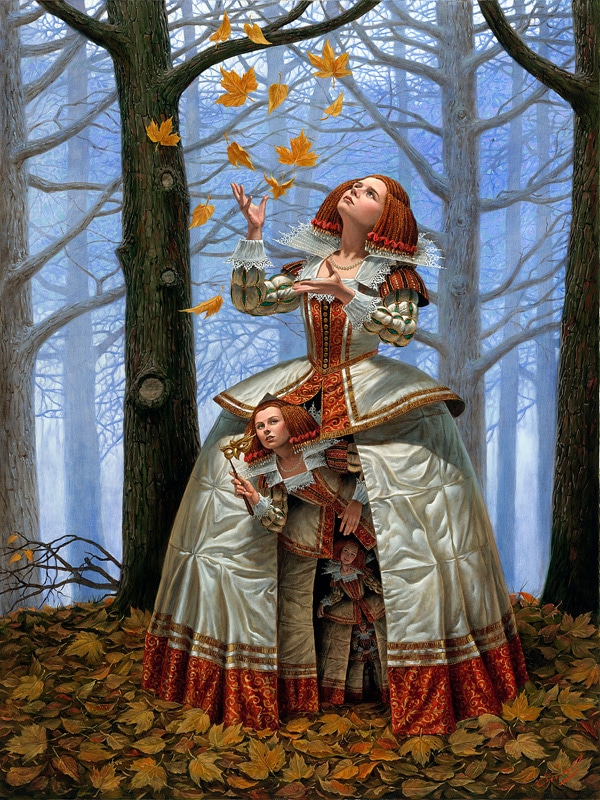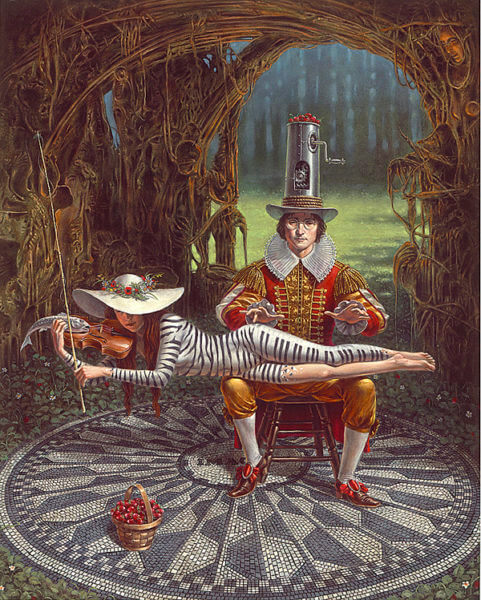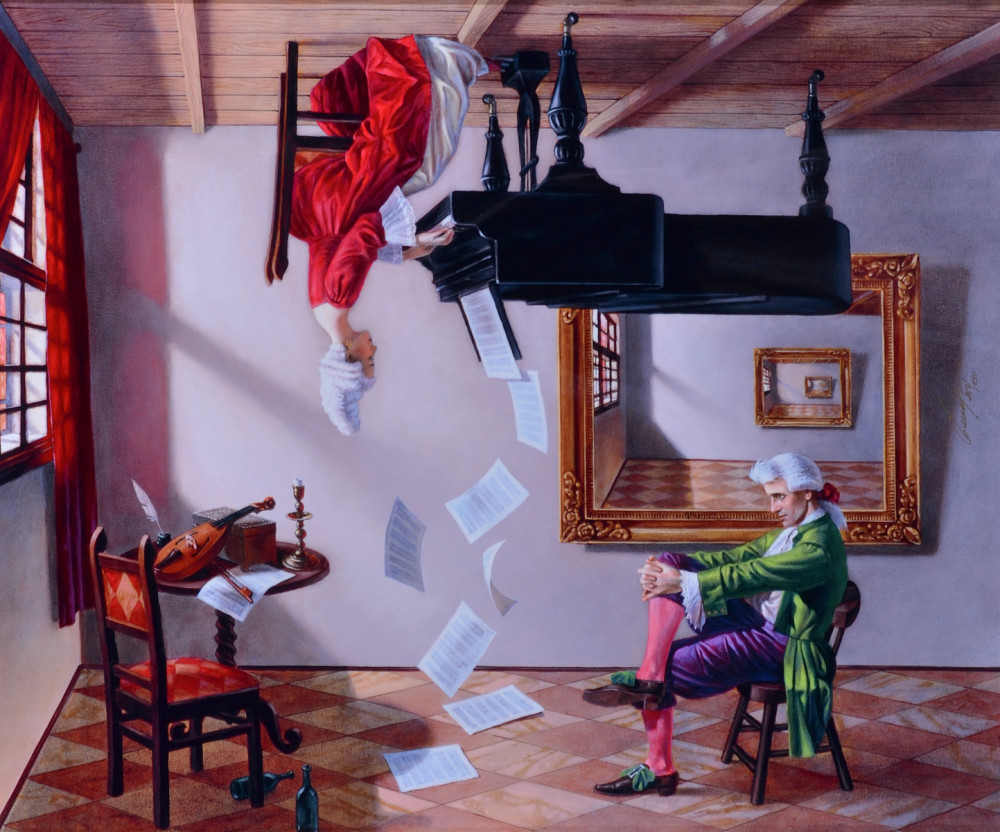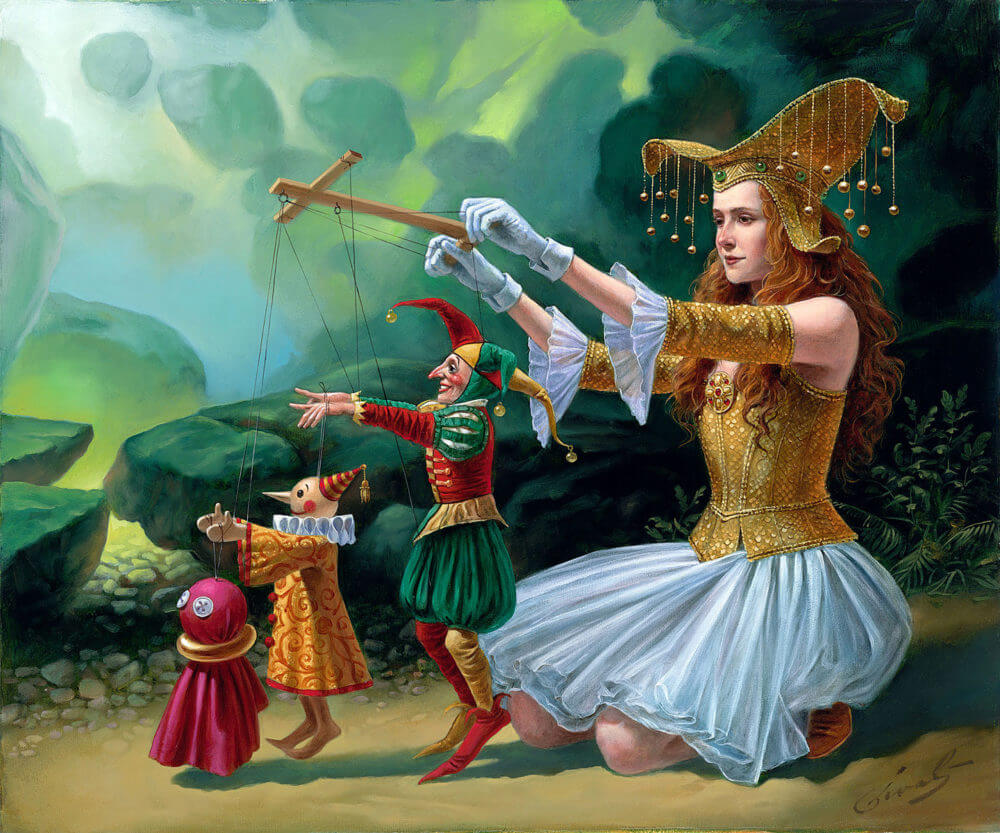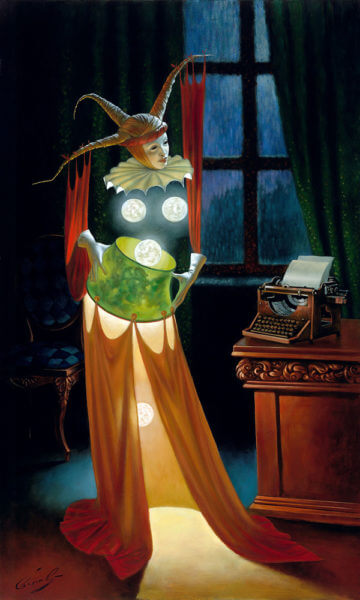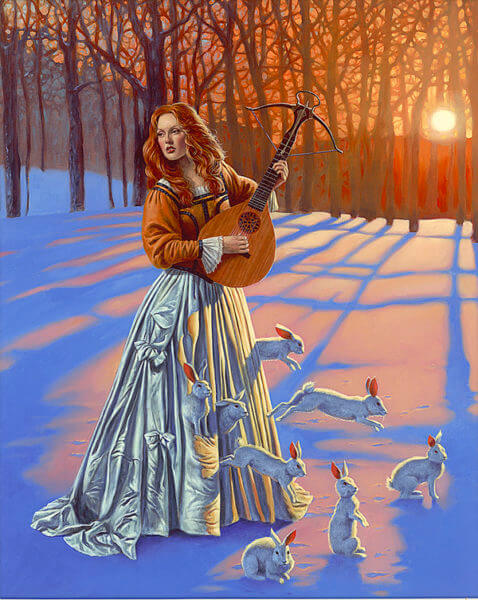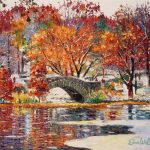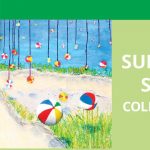6 Michael Cheval Artworks Explained by the Artist
The Absurdist art of Michael Cheval is thought-provoking and a joy to examine, but it can also leave viewers with more questions than answers, such as “what is the meaning behind this?”
Cheval says one of the greatest joys he experiences in creating art is starting a “game” with the viewer, where they must solve the riddle of the painting’s hidden meaning. The titles serve as clues, but the rest is left up to the viewer to decipher.
“I turn everything upside down and let people see the common things in a new light from a different angle,” Cheval says. “It’s regular, usual things—it’s about love and hate, about dreams, about magic.”
As much as Cheval enjoys the interaction between art and viewer, he does have his own meanings behind each work. Cheval graciously provided explanations to some of his artwork available through Park West Gallery, but continues to encourage his collectors to find their own meanings.
“When the viewer has his own explanation for my work, I really appreciate it because this is a game with a two-way street,” he says. “It means I provoked him to think and it means we co-author with this process of creativity.”
Here are Cheval’s personal insights on 6 of his most famous—and most enigmatic—works:
ENIGMA
The question of nature versus nurture is one deserving of thought. In exploring the question with this artwork, Cheval draws upon his Russian heritage and uses the martyoshka doll concept. In his words:
“A man is a nature’s child, her essential part. All processes, occurring in nature, happen with man as well. From birth to death—bloom, maturity, fading. And again there is birth, possibly in a different appearance. Do former generations remain in consecutive ones? Do children repeat their parents? The model of ‘matryoshka’ best illustrates this concept.”
IMAGINE II
Fans of The Beatles and John Lennon may have already unlocked the meanings behind this work, but Cheval provides more insight into the thought behind this painting and why the woman in front of Lennon is not Yoko Ono:
“This work is dedicated to John Lennon. He is the main character of the paining who sits on the mosaic floor located in Central Park, New York. This famous mosaic, from the ‘Strawberry Fields’ opposite the house where the legendary musician lived and died, is a pilgrimage center for fans devoted to Lennon and ‘Beatles.’”
“The woman figure lying on Lennon’s knees is not Yoko Ono, but a symbol of Music, incredible and full of surprises, like the silent violin that she plays. Strawberries are all around Lennon’s figure, even in his hat. The hat looks like a juicer with a clock mechanism. Perhaps, for Lennon, the Strawberry image was a symbol of love and, I think, juice from these berries fed his creativity as the God’s nectar. Love feeds creativity—this is an axiom.”
DISCORD OF ANALOGY
This artwork, depicting Mozart with a companion, can work if it is right-side up or upside down. Like his other works, Cheval notes that nothing is by accident in his art, including the topsy-turvy design. He even encourages collectors to see if they prefer this work upside down:
“Wolfgang Amadeus Mozart served as an inspiration for this painting. Like many other creators, he always sensed misunderstanding from people, even those close to him. Creator and solitude are kindred concepts. Creator always lives in another dimension. Hard to decide whose dimension is right. Mozart, sitting on the floor, or his companion, seated on the ceiling? Try to turn the painting upside-down and now she will be seated by the piano on the floor, and he on the ceiling. Whatever feels closer. Whichever one likes.”
EVOLUTION
As the title suggests, Cheval draws upon the theory of evolution for this artwork. The imagery is reminiscent of illustrations depicting the evolution of humans, but Cheval’s themes go beyond science:
“According to Darwin’s theory, everything evolves from primitive to complex. Actually everything in our life is a subject to this law. Social and personal relationships grow and develop complication. More developed systems control a primitive one. This can be illustrated by the example of the puppet theater, where a human controls a beautiful doll with a porcelain head, which in turn controls a wooden doll, and it manages a rag doll, which resembles a man. Doesn’t it look the same in our society?”
INSPIRATION
Inspiration can strike at any time, but what is the nature of inspiration? Cheval invites viewers to ponder such questions by drawing upon mythology to examine inspiration and creativity:
“What is Inspiration? How does it look, this delicate and elusive feeling, when you desire to create? The ancient Greeks gave to each of arts a separate Muse. But, nevertheless, it does not explain the nature of creativity. In this painting—the green table lamp turns to a female figure. Light bulb turns into glowing balls symbolizing the energy of creativity. The writer left his desk and typewriter, he was tired and went to sleep. But most likely, he left something unfinished because the inspiration remains in his room, expecting that the writer will come back and finish the chapter. Do not leave for tomorrow what you could do today!”
LOVE HUNTER II
This painting encapsulates the Absurdist style of Cheval, and begs the question of what it means. What is the lovely maiden hunting? An excerpt from his explanation sheds light on the juxtaposition of a crossbow that doubles as a lute:
“Love is not just roses, sighing in the moonlight and gentle words. Love is a real war. A man and a woman hunt for each other. And someone in the war wins and someone loses. It is very important that a loser doesn’t realize that he had lost. On this hunt, as in a war, all expedients are good. To hunt down, and gently entice a win. This lady-hunter has a beautiful weapon. Delicate lute imperceptibly turns into the [crossbow]. Rabbits popping out of her satin skirt—it is what she is complete—they symbolize her desire.”
Be sure to view Park West Gallery’s full Michael Cheval collection. For information on how to collect the art of Michael Cheval, register for our exciting online auctions or contact our gallery consultants at (800) 521-9654 ext. 4 or sales@parkwestgallery.com.
Listen to Michael Cheval tell his story on Park West Gallery’s “Behind the Artist” podcast!

